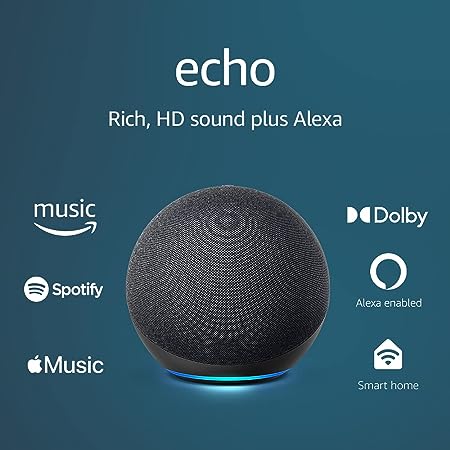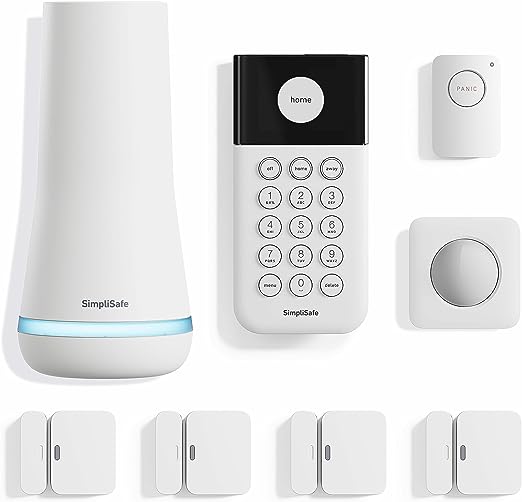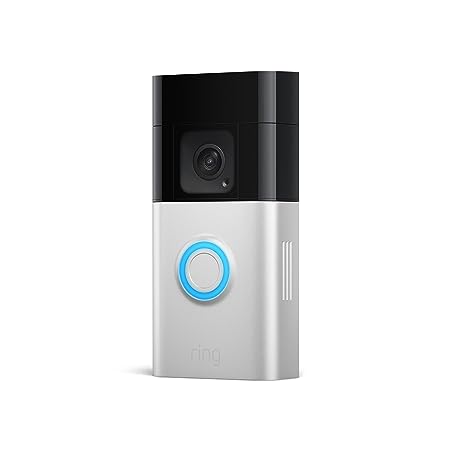The Ultimate Guide to Arranging Smart Home Devices In Your Home
Understanding the Benefits of Smart Home Devices
Smart home devices have become increasingly popular in recent years, offering homeowners a range of benefits and conveniences. From controlling household appliances with a simple voice command to enhancing security measures, these devices are revolutionizing the way we interact with our homes. One of the best advantages of smart home devices is their ability to improve energy efficiency. With smart thermostats, for example, users can easily control temperature settings and schedule adjustments based on their preferences or when they are away from home. This not only helps save money on energy bills but also reduces environmental impact.
Another key benefit of incorporating smart home devices into your living space is the increased level of convenience they provide. Imagine being able to turn off lights or lock doors without having to physically do it yourself – that’s exactly what smart lighting systems and door locks offer. These devices can be controlled remotely through smartphone apps or integrated platforms like Google Home, making it effortless to manage various aspects of your home from anywhere.
In addition to energy efficiency and convenience, another advantage of using smart home devices is improved safety and security. Smart cameras allow homeowners to monitor their property 24/7 through live video feeds accessible via smartphones or tablets. Some advanced models even feature facial recognition technology or motion detection capabilities for added peace of mind. Paired with smart doorbells that offer two-way communication and real-time alerts, these devices provide an extra layer of protection against potential intruders.
By taking advantage of the best home use smart devices available on the market today, homeowners can enjoy a more efficient, convenient, and secure living environment while reducing their carbon footprint and saving money in the long run.
Exploring the Top Smart Home Devices for Every Room
Smart home devices have become increasingly popular in recent years, offering convenience and efficiency to homeowners. In the living room, one of the best smart devices to consider is a voice-controlled speaker such as Amazon Echo or Google Home. These devices not only allow you to play music or podcasts with a simple voice command but also provide access to various other functions like answering questions, controlling other smart devices, and even ordering products online.
Moving into the kitchen, a smart thermostat can be an excellent addition. With features like remote temperature control and energy-saving settings, these devices offer both comfort and cost savings. Additionally, some models include compatibility with virtual assistants like Alexa or Google Assistant for hands-free operation.

In the bedroom, investing in a smart lighting system can greatly enhance your sleep routine. Smart bulbs that can be controlled through smartphone apps or voice commands make it easy to adjust brightness levels according to your preferences without getting out of bed. Some systems even have built-in wake-up routines that gradually increase light intensity in the morning for a more natural awakening experience.

By incorporating these home smart devices into different rooms of your house, you can create an interconnected network that simplifies daily tasks while increasing comfort and efficiency throughout your home. Whether it’s controlling lights from your bed or adjusting thermostats on-the-go using your smartphone, these technologies are designed to make life easier and more enjoyable for homeowners everywhere.
How to Choose the Best Smart Devices for Your Home
When it comes to choosing the best home smart devices, there are several factors to consider. First and foremost, think about your specific needs and preferences. Do you want a device that focuses on security, convenience, or entertainment? Understanding your priorities will help narrow down your options.
Next, research different brands and models of smart devices. Look for reputable companies with positive customer reviews and reliable products. Pay attention to features such as compatibility with other devices in your home ecosystem, ease of use, and integration with voice assistants like Amazon Alexa or Google Assistant.
Additionally, consider the scalability of the smart devices you choose. Think about how they can grow with your needs over time. It’s important to invest in a system that allows for expansion and future upgrades without requiring significant changes or replacements.
Remember that price is not always an indicator of quality when it comes to smart home devices. While some high-end options may offer additional features or better build quality, there are often more affordable alternatives that provide similar functionality.
By carefully considering your needs, researching different brands/models, evaluating scalability options, and looking beyond price tags alone; you can make informed decisions when choosing the best home smart devices for your unique requirements.



Enhancing Home Security with Smart Devices
One of the key benefits of smart home devices is their ability to enhance home security. With the advancement in technology, homeowners now have access to a wide range of devices that can help protect their homes from potential threats. However, it is important to know how to secure these smart devices properly to ensure maximum effectiveness.

First and foremost, it is crucial to change default passwords on all your smart devices. Many manufacturers often use generic or easily guessable passwords for convenience during setup. By changing these passwords, you significantly reduce the risk of unauthorized access and potential breaches.
Additionally, keeping all your smart device software up-to-date is essential for maintaining a secure environment. Manufacturers regularly release updates that address any vulnerabilities or bugs discovered within their systems. By promptly installing these updates, you ensure that your devices are equipped with the latest security features.
Furthermore, securing your Wi-Fi network plays a vital role in protecting your smart home devices. Make sure to set up a strong password for your Wi-Fi network and consider enabling additional security measures such as WPA2 encryption. This will prevent unauthorized users from accessing your network and potentially compromising your connected devices.

By following these simple steps on how to secure home smart devices, you can greatly enhance the overall security of your home. Remember that proactive measures such as changing default passwords, updating software regularly, and securing your Wi-Fi network are essential in safeguarding against potential cyber threats and intrusions into your smart home system.
Tips for Securing Your Smart Home Devices from Cyber Threats
Securing your smart home devices from cyber threats is of utmost importance in today’s digital age. With the increasing connectivity and reliance on technology, it is crucial to take necessary precautions to protect your privacy and prevent potential vulnerabilities. Here are some tips to help you safeguard your smart home devices.
Firstly, regularly update the firmware and software of your smart devices. Manufacturers often release updates that include security patches and bug fixes. By keeping your devices up-to-date, you can ensure that any known vulnerabilities are addressed promptly, reducing the risk of exploitation by hackers.
Secondly, always change default passwords and use strong, unique passwords for each device. Many smart home devices come with default login credentials that are easily guessable or widely known among hackers. Changing these passwords immediately upon installation adds an extra layer of protection against unauthorized access.
Lastly, consider integrating Google Home into your smart home network as it offers advanced security features like two-factor authentication (2FA). This additional step during login requires a second form of verification such as a fingerprint or one-time password sent to your smartphone. Implementing 2FA significantly reduces the likelihood of unauthorized access to your connected devices.
By following these simple yet effective tips for securing your smart home devices from cyber threats, you can enjoy the convenience and benefits they offer while maintaining peace of mind regarding data privacy and online safety.
The Advantages of Integrating Google Home with Smart Devices
Google Home is a popular smart speaker that offers numerous advantages when integrated with other smart devices in your home. One of the key benefits is its ability to act as a central hub, allowing you to control all your connected devices using just your voice. This means you can easily turn on lights, adjust thermostats, or even lock doors without having to physically interact with each device.

Another advantage of integrating Google Home with smart devices is the seamless connectivity it provides. With Google Assistant built-in, you can simply ask for information or give commands and have them executed across multiple devices simultaneously. For example, if you have installed security cameras throughout your home and want to check on different areas at once, you can ask Google Home to display live feeds from all cameras on a compatible screen.
When it comes to setting up a large network of smart devices in your home, choosing the best router is crucial for smooth operation. Thankfully, Google Home also offers compatibility with various routers designed specifically for larger homes. These routers provide extended coverage and higher bandwidth capabilities to ensure reliable connections throughout every corner of your house. By integrating Google Home with these routers, you can enjoy uninterrupted access to all your smart devices without any lag or connectivity issues.
Moreover, choosing the best router designed for larger homes ensures reliable connections and uninterrupted access to all integrated smart appliances within every corner of one’s residence
Creating a Smart Home Network: Choosing the Best Router for a Large Home
When it comes to setting up a smart home network in a large home, choosing the right router is crucial. A powerful and reliable router can ensure seamless connectivity and efficient data transfer between all your smart devices. One important factor to consider is the speed of the router. Look for routers that offer high-speed internet connections, such as those with Wi-Fi 6 technology. This will allow you to enjoy faster download and upload speeds, especially when multiple devices are connected simultaneously.
Another key consideration is the range of the router. In a large home, you need a router that can provide strong and stable signals throughout every corner of your house. Look for routers with multiple antennas or mesh systems that extend coverage by using additional nodes placed strategically around your home. This will help eliminate dead zones and ensure that all your smart devices receive optimal signal strength.
Security should also be a top priority when selecting a router for your smart home network. Choose routers with built-in security features like firewalls, encryption protocols, and guest networks to protect against potential cyber threats. Additionally, opt for routers that offer regular firmware updates from manufacturers as these updates often include patches for any identified vulnerabilities.
By carefully considering factors such as speed, range, and security features when choosing a router for your large smart home network, you can create an efficient and secure environment where all your devices work seamlessly together without any connectivity issues or compromises on performance.
Exploring the Latest Innovations in Smart Home Technology
Smart home technology continues to evolve at a rapid pace, with new innovations constantly being introduced to enhance our daily lives. One of the latest trends in smart home technology is voice control. Voice assistants like Amazon Alexa and Google Assistant have become increasingly popular, allowing users to control their smart devices simply by speaking commands. This hands-free approach has revolutionized the way we interact with our homes and has made tasks such as adjusting lighting, playing music, or even ordering groceries as easy as saying a few words.
Another exciting innovation in smart home technology is the integration of artificial intelligence (AI). AI-powered devices can learn your habits and preferences over time, making your home smarter and more intuitive. For example, a smart thermostat equipped with AI can automatically adjust the temperature based on your schedule and weather conditions outside. Similarly, AI-powered security systems can analyze patterns in activity to detect potential threats and send alerts accordingly.
The Internet of Things (IoT) has also played a significant role in driving innovation within the realm of smart homes. IoT refers to the network of interconnected devices that communicate with each other through the internet. This connectivity allows for seamless integration between various devices, enabling homeowners to create customized automation routines that suit their needs. From controlling lights and appliances remotely to monitoring energy usage or even feeding pets while away from home – IoT enables endless possibilities for creating a truly connected living environment.
As we continue exploring the latest innovations in smart home technology, it’s clear that convenience, efficiency, and customization are at the forefront of these advancements. With voice control becoming mainstream, AI enhancing automation capabilities, and IoT connecting all aspects of our homes together seamlessly – there’s no doubt that smart homes will continue transforming how we live for years to come.
Smart Home Device Installation and Setup: A Step-by-Step Guide
Setting up smart home devices can seem daunting at first, but with a step-by-step guide, it becomes much more manageable. The first thing you’ll want to do is gather all the necessary equipment and ensure that your Wi-Fi network is stable and reliable. This will ensure smooth communication between your devices.
Next, start by downloading the corresponding app for each device onto your smartphone or tablet. These apps are essential for controlling and managing your smart home devices. Once downloaded, open the app and follow the on-screen instructions to create an account or sign in if you already have one.
After signing in, it’s time to connect each device to your Wi-Fi network. Most smart home devices use Bluetooth or Wi-Fi connectivity options. Follow the prompts within the app to pair each device with your network. Make sure you enter any required passwords accurately.
Now that all of your devices are connected to your network, it’s time to customize their settings according to your preferences. Each device may have different customization options available through its respective app. Take some time to explore these settings and adjust them as desired.
Remember that patience is key during this process as some devices may take longer than others to set up properly. Be prepared for occasional troubleshooting along the way but don’t get discouraged – once everything is set up correctly, you’ll be able to enjoy the convenience and benefits of a fully functioning smart home system without any hassle.
Troubleshooting Common Issues with Smart Home Devices
One common issue that users may encounter with smart home devices is connectivity problems. This can occur when the device fails to connect to the Wi-Fi network or loses connection intermittently. To troubleshoot this issue, ensure that your router is in close proximity to the device and not obstructed by any objects. Additionally, check if there are any firmware updates available for both your router and the smart home device, as outdated software can sometimes cause connectivity issues.
Another frequent problem faced by users is compatibility issues between different smart home devices. It’s essential to ensure that all of your devices are compatible with each other before integrating them into your smart home system. Check if they support the same communication protocols such as Zigbee or Z-Wave, which enable seamless interaction between devices. If you encounter compatibility issues, consider using a smart hub or bridge that acts as a central control point for all your devices and helps facilitate their communication.
Furthermore, intermittent performance issues can also arise with certain smart home devices. For example, voice commands might not be recognized accurately by virtual assistants like Amazon Alexa or Google Assistant. To address this problem, make sure that you speak clearly and enunciate words properly when giving commands. Additionally, check if there are any background noises interfering with voice recognition and try adjusting microphone sensitivity settings on the device itself or within its accompanying app.
By troubleshooting these common issues related to connectivity problems, compatibility conflicts, and performance hiccups in an efficient manner using our guidelines above; users can enjoy a smoother experience with their smart home devices without unnecessary frustration
• Connectivity problems:
– Ensure router proximity and no obstructions
– Check for firmware updates for router and device
• Compatibility issues:
– Verify compatibility between devices
– Use a smart hub or bridge for seamless interaction
• Intermittent performance issues:
– Speak clearly and enunciate words properly
– Check for background noises interfering with voice recognition
– Adjust microphone sensitivity settings on the device or app
FAQ Best Home Use Smart Home Devices
Why should I consider using smart home devices?
Smart home devices offer convenience, energy efficiency, and enhanced security for your home. They can automate tasks, save energy, and provide peace of mind through remote monitoring and control.
What are some popular smart home devices for each room?
Some top smart home devices for different rooms include smart speakers like Amazon Echo or Google Home for the living room, smart thermostats like Nest for the bedroom, smart locks for the front door, and smart security cameras for the backyard.
How do I choose the best smart devices for my home?
Consider your specific needs, compatibility with existing devices, ease of use, and price when choosing smart devices for your home. It’s also helpful to read reviews and compare features before making a decision.
Can smart devices enhance home security?
Yes, smart devices like security cameras, doorbell cameras, and smart locks can significantly enhance home security. They provide real-time monitoring, remote access, and integration with other security systems for a more robust security setup.
How can I secure my smart home devices from cyber threats?
To secure your smart home devices, make sure to use strong, unique passwords, keep firmware and software updated, disable unnecessary features, and enable two-factor authentication whenever possible. Additionally, consider using a secure network and regularly monitor your devices for any suspicious activity.
What are the advantages of integrating Google Home with smart devices?
Integrating Google Home with smart devices allows you to control your home automation using voice commands and enjoy a hands-free experience. You can control lights, thermostats, security systems, and more with just your voice.
What is the best router for a large home when creating a smart home network?
When creating a smart home network for a large home, it’s important to choose a router with strong Wi-Fi coverage and fast speeds. Some popular options include mesh Wi-Fi systems like Google Nest Wifi, Netgear Orbi, or Eero Pro.
What are the latest innovations in smart home technology?
The latest innovations in smart home technology include advancements in voice control, artificial intelligence, and home automation. For example, smart devices now offer improved voice recognition, deep learning capabilities, and integration with virtual assistants.
How can I install and set up smart home devices?
Smart home device installation and setup typically involve downloading the corresponding app, following the manufacturer’s instructions, connecting the device to Wi-Fi, and configuring settings as desired. The specific steps may vary depending on the device.
What should I do if I encounter common issues with my smart home devices?
If you experience common issues with your smart home devices, try troubleshooting steps such as restarting the device, checking Wi-Fi connectivity, updating firmware or software, and ensuring compatibility with other devices. If the issue persists, consult the manufacturer’s support or seek professional assistance.
